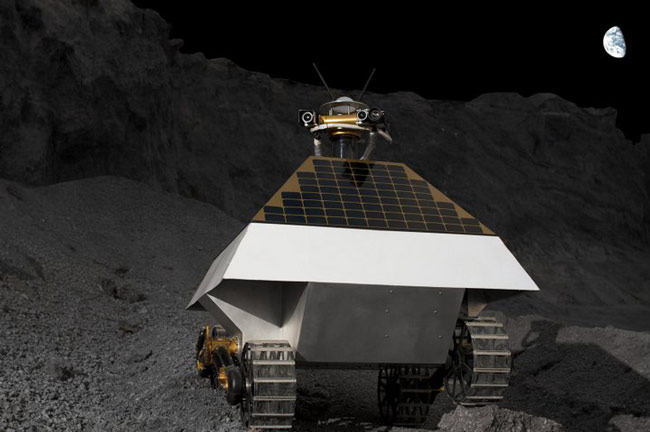NASA to Spend Up to $30 Million on Private Moon Data

NASA has signed six contracts worth as much as $30 million inall to purchase data from private teams competing to send homemade robots tothe moon.
The U.S. space agency awarded small, firm-fixed pricecontracts worth at least $10,000 to six teams competing in the GoogleLunar X Prize contest to design, build and launch private moon probes.
But contracts could ultimate award as much as $10 millionfor lucky individual teams through sales of technical data, as the privatecompetitors race to develop vehicles and end-to-end robotic lunar landingmissions. The total maximum value of the contracts over five years could reachup to $30.1 million, NASA officials said.
There is a catch. The Lunar X Prize teams must earn theirpaydays by offering the most valuable and unique data related to milestonedemonstrations of sending low-cost missions to the lunar surface.
"The dollar values may be a relatively small contractby NASA standards, but these contracts send a clear signal to the investmentcommunity that NASA is ready to purchase lunar data, even from small,entrepreneurial firms," said William Pomerantz, senior director for space prizesat the X Prize Foundation.
The NASA money comes in addition to the $30 million prizepurse up for grabs in the Google Lunar X Prize competition. Twenty-twoteams are racing to land a robot on the lunar surface, have it move atleast 1,650 feet (500 meters) and transmit data and images back to Earth.
The first team to finish those tasks by Dec. 31, 2012, will claimthe $20 million grand prize. An additional $10 million is also available forsecond place and achievements such as finding water-icein lunar craters.
Get the Space.com Newsletter
Breaking space news, the latest updates on rocket launches, skywatching events and more!
The Lunar X Prize teams that received contracts from NASA's InnovativeLunar Demonstrations Data program include:
- AstroboticTechnology Inc., Pittsburgh, Pa.
- The Charles Stark Draper Laboratory, Inc., Cambridge, Mass.
- Dynetics Inc., Huntsville, Ala.
- Earthrise Space Inc., Orlando, Fla.
- Moon Express Inc., San Francisco
- TeamFREDNET, The Open Space Society, Inc., Huntsville, Ala.
Teams may earn just over $1 million from NASA based oninitial data relating to tests on Earth, but most of the government funding isreserved for data coming from Lunar X Prize spacecraft en route to or alreadyon the moon.
NASA's Innovative Lunar Demonstrations Data program ismanaged out of the Lunar Lander Project Office at the Johnson Space Center nearHouston.
- Top 10 Fantasy Spaceships Headed For Reality
- 6 Private Companies That Could Launch Humans Into Space
- Moon Exploration Is Not Dead, NASA Official Says
Join our Space Forums to keep talking space on the latest missions, night sky and more! And if you have a news tip, correction or comment, let us know at: community@space.com.

Space.com is the premier source of space exploration, innovation and astronomy news, chronicling (and celebrating) humanity's ongoing expansion across the final frontier. Originally founded in 1999, Space.com is, and always has been, the passion of writers and editors who are space fans and also trained journalists. Our current news team consists of Editor-in-Chief Tariq Malik; Editor Hanneke Weitering, Senior Space Writer Mike Wall; Senior Writer Meghan Bartels; Senior Writer Chelsea Gohd, Senior Writer Tereza Pultarova and Staff Writer Alexander Cox, focusing on e-commerce. Senior Producer Steve Spaleta oversees our space videos, with Diana Whitcroft as our Social Media Editor.









